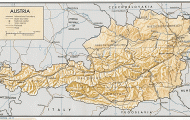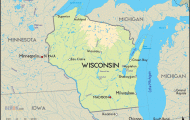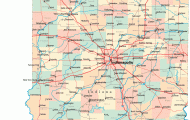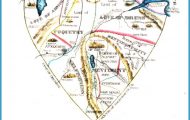FOLLOWING HEINTOOGA, ROUND BOTTOM, AND BIG COVE ROADS INTO CHEROKEE
At Wolf Laurel Gap on the southern section of the Blue Ridge Parkway (Route 8), Heintooga Ridge Road turns off to the north and heads deep into Cherokee country. At an elevation of over five thousand feet, this ridgeline road lets you drive into a different season. In mid-May, when the spring wildflowers have finished blooming in the valleys and the trees have lost that early spring-green hue, you can drive up here and find wildflowers carpeting the roadsides and the trees just beginning to leaf out. Later in the year, you can do just the opposite; fall comes much earlier here than in the valleys below. Heintooga Ridge Road is closed in winter.
A little more than three miles from the parkway, the road enters Great Smoky Mountains National Park, just before reaching Black Camp Gap. At the gap, a handicap-accessible path leads from the parking area to the Masonic Monument. Embedded in the marker are stones from all over the world, including all seven continents. Among the 687 stones are those from Plymouth Rock, the Rock of Gibraltar, the Alamo, and the White House.
Balsam Mountain Campground lies near the end of the paved road. At the end is what may be the most appealing picnic area in the state. Situated in a spruce-fir forest at an elevation of over 5,500 feet, the air is cool (sometimes frigid in spring and fall) and the forest smells like a Christmas tree. Red squirrels, called boomers, chatter incessantly, as if begging someone to toss a crumb. Most likely, they are just defending their territory from your intrusion. (Feeding any wildlife is strictly against park regulations.) A really cool thing about the picnic area is the tables. A few are made from huge natural rock slabs. Moss covers some of them, serving as a natural green tablecloth. A hiking trail leads from the picnic area a short distance to Heintooga Overlook, a great spot to watch the sunset.
Most people turn around at Heintooga Picnic Area and backtrack to the parkway. But we’re not like most people. We’re going to continue on Balsam Mountain Road, which takes off from the circle at the picnic ground. The one-way gravel road winds its way down the mountain, providing an intimate view of the forest. It quickly leaves the high-elevation spruce-fir forest and takes you through mixed hardwood woodlands, complete with heath balds and hemlock.
The land we’re passing through was once Cherokee country. In the 1830s, when the U.S. government rounded up the Cherokee and force-marched them to Oklahoma along the now-infamous Trail of Tears, some Cherokees sought refuge in the fastness of this wilderness. A century later, lumbermen penetrated the virgin forest and left barren mountainsides in their wake. Balsam Mountain Road follows the course that the old narrow-gauge railroad used to haul logs down the mountain. While not pristine and no longer harboring giant trees, the land has healed well since the park came along in the 1930s. The last few miles of the road follow the scenic Straight Fork through a beautiful bottomland forest. In the latter half of April, this area is lush with spring ephemeral wildflowers.


















